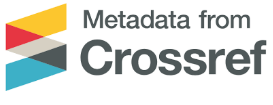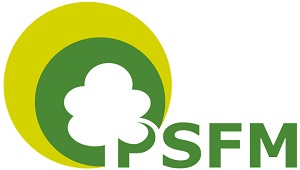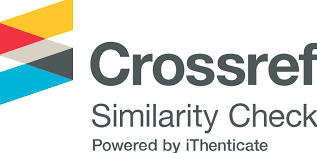NGHIÊN CỨU ĐÁNH GIÁ ĐA DẠNG DI TRUYỀN NGUỒN GEN CÂY MẠY BÓI (Bambusa burmanica Gamble) TẠI MỘT SỐ TỈ NH TÂY BẮC
Từ khóa:
Đa dạng di truyền,, chỉ thị phân tử, Mạy bói, ISSRTóm tắt
Mạy bói (Bambusa burmanica Gamble) là loài cây đa tác dụng, có giá trị kinh tế cao và được dùng phổ biến ở nhiều quốc gia, trong đó có Việt Nam. Ở nước ta, Mạy bói có phân bố tự nhiên chủ yếu ở khu vực Tây Bắc. Những năm gần đây, loài cây này bắt đầu được phát triển trong sản xuất, do đó việc nghiên cứu phát triển và bảo tồn nguồn gen loài cây này là cần thiết. Trong các hoạt động chọn lọc và phát triển giống, nghiên cứu phân tích đa dạng di truyền nguồn gen loài là hoạt động cần thiết. Các thông tin về cấu trúc quần thể, tính đa dạng di truyền của loài cung cấp những thông tin cơ bản cho việc xây dựng các hoạt động nghiên cứu và phát triên để vừa phát triển được nguồn giống có chất lượng, lại vừa duy trì tính đa dạng di truyền cần thiết của loài nhằm đáp ứng các mục tiêu nghiên cứu trong tương lai. Kết quả phân tích 48 mẫu Mạy bói thu thập từ 3 tỉnh Sơn La, Điện Biên và Lai Châu (4 điểm/tỉnh 4 mẫu/điểm) bằng 7 mồi ISSR cho thấy mức độ đa dạng di truyền của Mạy bói tương đối cao (h=0,198) với mức độ sai khác về mặt di truyền giữa các quần thể là 24%. Trong đó, quần thể Sơn La có tính đa dạng di truyền cao nhất và có khoảng cách di truyền xa hơn hẳn so với 2 quần thể còn lại. Một số ứng dụng của phân tích đa dạng di truyền trong nghiên cứu phát triển nguồn gen loài cây này cũng được đề cập trong nghiên cứu n
Tài liệu tham khảo
1. Doyle J. J. and Doyle J. L., 1987. A rapid DNA isolation procedure for small quantities of fresh leaf tissue. Phytochemical Bulletin. Vol. 19: 11-15.
2. Esselman E., Jianqiangamplifiedord D., Windus J., Wolfe A., 1999. Clonal diversity in the rare Calamagrostis porteri ssp. insperata (Poaceae): comparative results for allozymes and random amplifi ed polymorphic DNA (RAPD) and inter simple sequence repeat (ISSR) markers. Molecular Ecology 8: 443-451.
3. Hoàng Đăng Hiếu, Chu Thị Thu Hà, Phạm Bích Ngọc, Lâm Đại Nhân, Nguyễn Thị Thúy Hường, Chu Hoàng Hà, 2016. “Sử dụng chỉ thị ISSR trong việc đánh giá đa dạng di truyền ở quần thể Ba kích tại Quảng Ninh”, Tạp hí Sinh học, 38 (1/2016): 89-95.
4. Kim M. K., Park M. J., Jeong W. H., Nam K. C., Chung J., 2006. SSR marker tightly linked to the Ti locus in Soybean [Glycine max (L.) Merr.]. Euphytica 152(3): 361-366.
5. Kusalaruk, W. and Limsangouan, H., 2015. Nutrition and Nutraceutical of Bambusa burmanica Gamble and Thysostachys siamensis Gamble shoots. Thai Agricultural Research Journal, 33(2): 169-178.
6. Mace ES., Lester RN., Gebhardt CG.,1999. AFLP analysis of genetic relationships among the cultivated eggplant, Solanu melongena L., and wild relatives (Solanaceae), Theor. Appl. Genet. 99: 626 - 633.
7. Nei M. and Li W. H. , 1979. Mathematical Model for Studying Genetic Variation in Terms of Restriction Endonucleases. Proceedings of the National Academy of Sciences of the United States of America, 76: 526-5273. https://doi.org/10.1073/pnas.76.10.5269.
8. Peakall, R.. Smouse P. E. , 2006. GenAlEx 6: genetic analysis in Excel. Population genetic software for teaching DNA research. Molecular Ecology Notes, 6 (1): 288 -295.
9. Powell W., Morgante M., Andre C., Hanafey M., Vogel J., Tingey S., Rafalski A., 1996. The comparison of RFLP, RAPD, AFLP and SSR markers for germplasm analysis. Molecular Breeding 2(3): 225 - 23.
10. Ramanayake, S., Meemaduma, V. & Weerawardene, 2007. Genetic Diversity in a population of Dendrocalamus giganteus Wall. ex Munro (giant bamboo) in the Royal Botanic Gardens in Peradeniya, Sri Lanka. Journal of the National Science Foundation of Sri Lanka, vol. 35, No. 3: 207 -210.
11. Ruan Z. Y., Yang H. Q., Tian B., Yang Y. M., Sun M. S., 2010. Genetic diversity analysis based on ISSR among six populations of Dendrocalamus brandisii in Yunnan Province, China. Journal of 2ndjing Forestry University 32(2): 46-51.
12. Thida Hlaing, 2019, 2rdMyanmar Korea Conference Research Journal
13. Tian, B., Yang, H.Q., Wong, K.M., Liu, A.Z. & Ruan, Z.Y., 2012. ISSR analysis shows low genetic diversity versus high genetic differentiation for giant bamboo, Dendrocalamus giganteus (Poaceae: Bambusoideae), in China Populations. Genetic Resources and Crop Evolution, vol. 59:901-908..
14. Nguyễn Viễn, Trần Thị Liễu, Vũ Thị Thu hiền, Vũ Tiến Chính, Trần Thị Phương Anh, Nguyễn Văn Thọ, 2019. Phân tích đa dạng di truyền các quần thể Tre ngọt (Dendrocalamus brandisii (Munro) Kurz) ở một số tỉnh miền núi phía Bắc Việt Nam dựa trên chỉ thị phân tử ISSR. Tạp chí Công nghệ Sinh học tập 17, số 1/2019: 105-114
15. White T., 2001. Breeding strategies for forest trees: Concepts and challenges. Southern African Forestry Journal, 190 (1): 31-42
16. Wolfe A. D., Xiang Q. Y., Kephart S. R., 1998. Assessing hybridization in natural populations of Penstemon (Scrophulariaceae) using hypervariable inter simple sequence repeat markers. Molecular Ecology 7: 1107- 1125.
17. Yang H. Q., An M. Y., Gu Z. J., Tian B., 2012. Genetic diversity and differentiation of Dendrocalamus membranaceus (Poaceae: Bambusoideae), a declining Bamboo species in Yunnan, China, as based on InterSimple Sequence Repeat (ISSR) analysis. Int J Mol Sci 13: 4446-4457.
18. Yeh, F.C., Yang, R.C. and Boyle, T.. 1999. POPGENE. Microsoft Windows Based Freeware for Population Genetic Analysis. Release 1.31. University of Alberta, Edmonton.
19. Zietkiewicz E., Rafalski A., Labuda D., 1994. Genome fingerprinting by simple sequence repeat (SSR)-anchored polympolymerase amplificationifi cation. Genomics 20: 176-183












